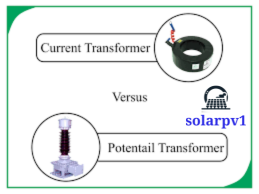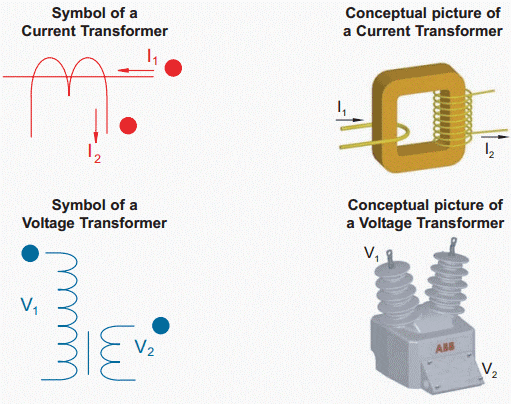Introduction to Current Transformers CT and PT Potential Transformers
Current Transformers CT and PTPotential Transformers are critical components in electrical power systems, serving essential roles in the accurate measurement and safe operation of these systems. These transformers are designed to convert high current or voltage levels in the electrical power grid to lower, more manageable levels that can be easily measured by standard instruments.
Current Transformers, or CTs, are specifically designed to measure the current flowing through a conductor. They operate by producing a secondary current that is proportional to the primary current but scaled down to a safer, lower level. This secondary current can then be used by metering devices or protective relays to monitor and control the electrical system. The design of a CT typically includes a core made of magnetic material and windings that transfer the electrical current from the primary circuit to the secondary circuit. By accurately reflecting the primary current, CTs enable precise measurement and analysis, which are crucial for maintaining system stability and efficiency.
Potential Transformers, or PTs, on the other hand, are used to measure voltage levels in the electrical system. They function by stepping down high voltage to a lower level that can be safely measured. Like CTs, PTs also consist of a core and windings, but they are designed to handle voltage instead of current. The operational principle of a PT involves the electromagnetic induction process, where the primary winding receives the high voltage, and the secondary winding produces a proportional but reduced voltage. This transformation allows for accurate voltage monitoring and ensures that all components of the power system operate within their specified limits.
The importance of CTs and PTs in electrical systems cannot be overstated. They provide the necessary data for monitoring system performance, detecting faults, and ensuring the safety of both the equipment and personnel. By converting high currents and voltages to lower, measurable values, these transformers play a pivotal role in the effective management and protection of electrical power systems.
Applications of Current Transformers (CT)
Current Transformers (CTs) play a pivotal role in modern electrical systems, primarily by enabling the measurement of high current levels that would otherwise be impractical to monitor directly. By stepping down these high currents to manageable levels, CTs facilitate precise measurement, control, and protection in various applications. This capability is particularly crucial in power systems where accurate current measurement is essential for effective monitoring and management.
One of the primary applications of CTs is in the metering of electrical consumption. Accurate billing and energy management hinge on the precise measurement of current, and CTs provide a reliable means to achieve this, especially in high-voltage environments. By converting high currents to standardized lower values, CTs allow for the use of conventional metering equipment, ensuring both safety and accuracy in energy consumption monitoring.
In protection systems, CTs are indispensable. They are integral to the operation of protective relays, which safeguard electrical equipment and infrastructure from faults and overloads. By providing real-time current data, CTs enable protective devices to make swift and accurate decisions, thus preventing potential damage and ensuring the stability and reliability of the electrical network. This application underscores the importance of CTs in maintaining the integrity of power systems.
Moreover, CTs are vital in control systems, where they provide the necessary current information to regulate and manage electrical loads. This is particularly important in industrial settings, where precise control of electrical parameters can significantly impact operational efficiency and equipment longevity. By facilitating accurate current measurement and control, CTs contribute to the optimization of electrical processes and the overall efficiency of the system.
In summary, the applications of Current Transformers are extensive and critical to the functionality of electrical systems. From metering and protection to control and safety, CTs ensure that high currents are accurately and safely handled, thereby enhancing the efficiency and reliability of electrical systems. Their role in stepping down high currents to manageable levels cannot be overstated, making them an essential component in modern electrical engineering.
Applications of Potential Transformers (PT)
Potential Transformers (PTs) play a pivotal role in the accurate measurement and monitoring of high voltage levels within power systems. These transformers are indispensable in ensuring the stability and reliability of electrical networks by providing essential data for voltage regulation and protection schemes.
One of the primary applications of Potential Transformers is in the measurement of high voltage levels. PTs step down the high voltage to a lower, standardized value that can be easily measured by instruments and metering devices. This capability is crucial for the safe and effective monitoring of electrical systems, as it allows for precise voltage measurement without exposing equipment and personnel to dangerous high voltages.
In addition to measurement, PTs are integral to voltage regulation. By providing real-time voltage data, PTs enable automatic voltage regulators (AVRs) and other control systems to maintain the desired voltage levels within the power network. This regulation is vital to ensure the efficiency and longevity of electrical equipment and to minimize the risk of voltage-related issues such as overvoltage or undervoltage conditions.
PTs are also critical components in protection schemes within electrical systems. They serve as key inputs to protective relays, which are devices that detect faults or abnormal conditions in the network and initiate corrective actions, such as isolating the affected section to prevent damage and maintain system integrity. The accurate voltage information provided by PTs ensures that protective relays can operate correctly and promptly, safeguarding the entire electrical infrastructure.
Moreover, Potential Transformers are essential for metering and monitoring voltage levels across various parts of an electrical network. They support the accurate billing of electricity consumption by providing precise voltage data to energy meters. This precision is crucial for both utility companies and consumers, as it ensures fair and transparent billing practices.
In summary, Potential Transformers are indispensable in the measurement, regulation, and protection of high voltage levels in power systems. Their role in maintaining the stability and integrity of electrical networks cannot be understated, making them a fundamental component in modern electrical engineering.
Comparative Analysis and Integration in Power Systems
Current Transformers (CTs) and Potential Transformers (PTs) are critical components in electrical systems, each serving distinct yet complementary functions. While both transformers are integral for accurate measurement and protection, they exhibit fundamental differences in design and application. CTs, designed to measure high current levels, convert the primary current into a lower, manageable secondary current. In contrast, PTs, also known as Voltage Transformers (VTs), step down high voltage levels to lower voltages suitable for metering and protection devices.
The integration of CTs and PTs within power systems is vital for maintaining system reliability and safety. CTs are typically installed in series with the load, ensuring that all the current flowing through the circuit is accurately measured. PTs, however, are connected in parallel with the supply voltage, enabling precise voltage measurements without disrupting the circuit. Together, these transformers provide a comprehensive monitoring solution, facilitating the accurate measurement of both current and voltage, which is essential for effective system protection and control.
In modern electrical systems, the use of CTs and PTs extends beyond simple measurement. They are crucial for the operation of protective relays, which detect abnormal conditions such as overcurrent or overvoltage and initiate corrective actions to prevent equipment damage or power outages. The precise data provided by CTs and PTs enable these protective devices to function accurately and promptly, enhancing the overall reliability of the power system.
Looking ahead, advancements in transformer technology continue to evolve, driven by the increasing complexity and demands of contemporary electrical systems. Innovations such as digital transformers and the integration of advanced materials are enhancing the performance and efficiency of CTs and PTs. These developments promise more accurate measurements, improved safety, and greater adaptability to the dynamic nature of modern power grids. As the industry progresses, the role of CTs and PTs will undoubtedly expand, ensuring they remain indispensable components in the ever-evolving landscape of electrical power systems.

